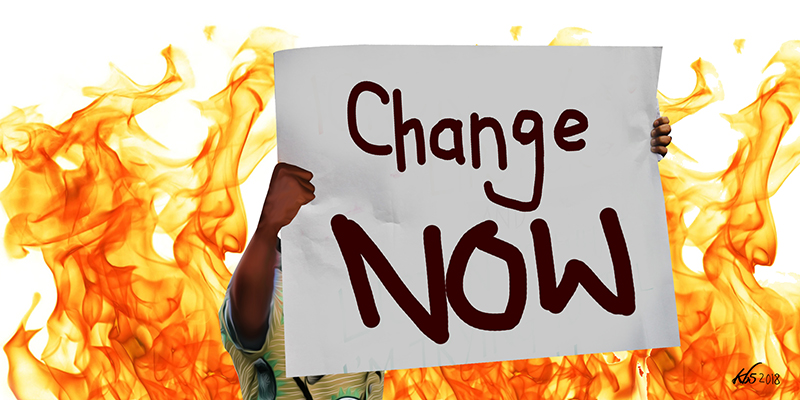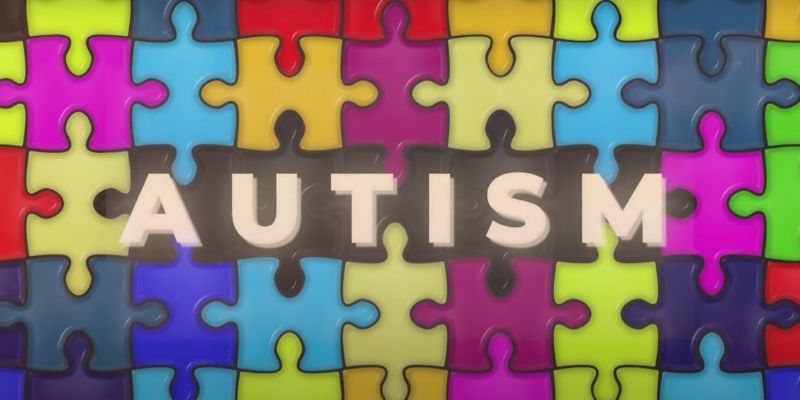This Tuesday the 7th of July 2020 marks the 30th anniversary of the infamous and bloody Saba Saba Day (seventh day of the seventh month) upheavals that are still etched in the memory of the many Kenyans old enough to vividly recall those heady days of the struggle for the second liberation. It was a day of infamy, as President Daniel arap Moi, now deceased, unleashed his security apparatus on hapless, innocent Kenyans, killing and maiming many of them for daring to call for a return to multipartyism.
Three days prior, on 4 July 4 1990, Kenneth Matiba and Charles Rubia, former Kanu government cabinet ministers who had fallen out with Moi (both now deceased), and Raila Odinga—who had just returned from self-exile in Oslo, Norway—had been arrested on the orders of President Moi. The 4th of July is America’s Independence Day. Kenyan political analysts have always wondered whether it was mere coincidence or a conspiracy between Moi and the American government to have the trio arrested on the very day America would be celebrating its much vaunted independence day. Did the American government have something to do with their arrests? “Why would the Americans, who were friends of the three, allow Moi to detain them on their big day”, Augustine Njeru Kathangu, one of the architects of Saba Saba, has always wondered.
The Saba Saba demonstrations heralded the beginning of week-long urban riots that came to symbolise the determination of Kenyans to maintain their demands for an increased democratic and political space that had been throttled by a dictatorial Moi and a despotic Kanu party. The mounting pressure brought to bear on Moi was such that he was forced to quickly constitute a Kanu Review Committee (referred to as the Committee), which immediately started its work on 25 July 25 1990.
The formation of the Committee by the beleaguered President was, ostensibly, to seek Kenyans’ views on the current state of the country’s politics. But the truth of the matter was that Moi was trying to buy time as he figured out how he was going to acquiesce to plural politics without losing face. Chaired by the then Vice President George Saitoti, the Committee was peppered with Kanu loyalists such as Nicholas Biwott, Peter Oloo Aringo, Shariff Nasir, Elijah Mwangale and Mwai Kibaki, among others.
The Committee visited nine towns during the month of August: Eldoret, Embu, Garissa, Nairobi, Kakamega, Kisumu, Mombasa, Nakuru and Nyeri. It visited Nairobi twice; on July 25 and on 23 and 24 August1990. Among the more bizarre recommendations that the Committee made was “that Kenya should continue in its tradition of one-party democracy. That all leaders in every sphere of life particularly religious leaders, politicians, lawyers, journalists and other professionals, should cease their confrontational stance and adopt a positive attitude towards issues in order to build a more peaceful and prosperous Kenya”.
With these sorts of recommendations, a contemptuous Moi and dyed-in-the-wool Kanu party mandarins, it was obvious that Kenyans’ agitation for a return to multiparty politics was destined to continue to be bloody and confrontational.
“Moi’s Kanu dictatorship was not ready for changes, but the people had smelt an opportunity and they were willing to push ahead with political reforms”, said Kathangu. A former army man and a devout Catholic who never misses the morning mass wherever it might find him, Kathangu had been planning for the Saba Saba day for two months together with four other people,
“We started planning for the Saba Saba from May”, recalled Kathangu. “I had an office at Musa House on the third floor, on Landhies Road, where we would meet and plan how we were to mobilise for the big day”. Kathangu’s four other compatriots were: Edward Oyugi, a former Kenyatta University don and detainee; Ngotho Kariuki, a tax consultant, university don and ex-detainee; George Anyona, the political firebrand, former MP and ex-detainee; and Kariuki Kathitu, a university don.
Of the five, Kathitu is the least known of those who were associated not only with the planning of that first Saba Saba, but also, more generally, with the second liberation of the 1990s. “Raila joined us much later. Raila is my friend, but I’ve always referred to him as a witness to the Saba Saba movement. He was much more involved with the Forum for the Restoration of Democracy movement formed in 1991, than Saba Saba, which his father Jaramogi Oginga Odinga and others such as James Orengo, Martin Shikuku and Salim Bamahriz, helped form”.
“Matiba joined us later after he had read the public mood correctly, but also after falling out with Moi publicly”, said Kathangu. “Matiba had had an interesting special relationship with Moi. They had been great friends. When Matiba was the Permanent Secretary for Education, he used to coach Vice President Moi in the evenings, on the proper usage of the English language, mostly on the spoken English. So they knew each other well. Moi had been Matiba’s good student. But when Moi became the president in 1978, his man in Murang’a was Julius Kiano. Matiba’s entry into politics and his routing out of Moi’s man in Mbiri constituency was always going to create a problem between the two.”
Kathangu told me that it was Matiba who recruited Rubia. “Rubia was initially not in the movement for change, but his friend who was an area mate—they both came from the larger Murang’a—invited him along and that’s how Rubia, who had also been facing political frustrations from Moi, joined the opposition. Matiba came looking for us after he was disgraced by Moi. Matiba was a man who once he made up his mind, it was difficult to persuade him otherwise”.
Matiba’s falling out with Moi was triggered by Moi’s open rigging of the Mlolongo (queue voting) elections in 1988 in his Kiharu (former Mbiri) constituency. “Matiba’s queue was the longest for all to see, yet Moi decided it was the shortest so that he could prop up his friend Kiano who Matiba had beaten hands down. Matiba hit the roof, he had captured his entire election process on the video. It was clearly evident Moi was rigging Matiba openly. And that was the beginning of the political problems between Moi and Matiba.”
Boisterous and oftentimes overconfident, Matiba went ahead together with Rubia to declare the return of multiparty politics in Kenya without the agreement of Kathangu and his friends. “He had jumped the gun, that’s not how we had planned to do it, but hey, since Matiba had already let the cat out of the bag, we went along, we didn’t deny them, neither did we deny that that is what we all along been planning to do”, observed Kathangu. “It was one of the first of the mistakes that Matiba would make as we fought for the second liberation”.
Although taken aback by Matiba’s pronouncements, Kathangu and his friends still went ahead to mobilise for Saba Saba day. “Our intentions were to mobilise people to congregate on the sacred grounds of Kamukunji. We’d coordinated and mobilised people from different parts of the country to travel to Kamukunji. People were to come from Githurai, Limuru, Kisumu, Mombasa, Murang’a, Nakuru and the other major towns in the country.”
To start off the day, and as a curtain raiser, the organisers planned football matches at the Kamukunji Grounds in the morning. “The matches were to be supervised by Kathitu and they were to help attract and assemble people at the grounds. At around 1p.m. Anyona and I drove into the grounds to see for ourselves what was going on. When the people saw us—they had been waiting on the wings around Gikomba Market, in Majengo and Shauri Moyo estates—they started moving into the grounds.” The organisers had hired buses to ferry people from upcountry and those buses had arrived in the morning.
“A police officer who later I came to learn was called Cheruiyot—I can’t remember his first name—and who had also camped at Kamukunji Grounds, apparently spotted us entering the ground”, reminisced Kathangu. “Once he saw us and once the people saw us enter the grounds and followed us, Cheruiyot called for extra support and soon combat police came. They beat people mercilessly with their batons and killed many youths with their live bullets”. As the police beat people in Kamukunji Grounds, word got around in parts of the country that mayhem had broken out in Nairobi and consequently, there were riots in Githurai, Limuru, Kisumu and Mombasa”. Kathangu observed that Moi ordered the arrest of more than 3,000 youths for the simple reason that they had supported the political changes being called for by opposition leaders.
Senior Counsel Paul Muite recalls the events of the day vividly: “My friend, the American ambassador to Malawi George Trail, had come to see me in my office at Electricity House in the city centre. He was from the US on his way to Malawi. Trail had been the No. 2 at the US embassy in Nairobi and we had become friends. Mohamed Ibrahim, a lawyer and today a judge of the High Court of Kenya had also passed by to see me on a legal matter. I’d planned after finishing with the two, I head to Karen Country Club to play golf. So I asked them we leave early to beat the lunch hour traffic jam”. He was going play golf with F.T. Nyamu, a Nyeri tycoon who later became the MP for Tetu constituency.
“It is at the club that my wife called me to tell me Matiba and Rubia had been carted away by the police”, said Muite. “In those days if police took you away, you knew you were headed for detention. After I parted with Ibrahim, the police, who had seen me leave my office with him [Moi had always stationed police to watch Muite’s sixth-floor office at the lifts area and on the ground floor], followed him and asked him to tell them where I had gone. Ibrahim didn’t know I’d gone to play golf. When Ibrahim told them he didn’t know my whereabouts, they didn’t believe him”. The police had detention orders with them and as they were talking to Ibrahim, they placed the detention order book on the table and he saw that the first detention sheet was signed and had Paul Muite’s name. The other order was not signed and didn’t have any name. “What the police did was fill the order with Ibrahim’s name and that’s how Ibrahim was detained on the spot by the police”.
Moi also ordered the arrest of Gitobu Imanyara and John Khaminwa, who together with Ibrahim became the most prominent lawyers to be detained Moi during the crackdown on the Saba Saba movement. Gibson Kamau Kuria, who had been detained in 1986, went to hide at the American embassy which then was under Smith Hempstone’s watch. Muite, who had all along ben staying at his house in Karen, escaped the crackdown, all because the police didn’t think he was “hiding” in his own house. “Hempstone piled pressure on Moi to release the lawyers, Imanyara, Khaminwa and Ibrahim and Muite, but Moi was in a dilemma, his government didn’t know where Muite was, so how was he going to also release him?”, said Muite.
It is then that Moi pleaded with Muite to come out of hiding and meet him at State House with an apology for inciting the Saba Saba day riots. “Moi blamed me for the riots and had asked me to write him an apology letter. I didn’t but I still went to meet him”.
The Saba Saba movement gave momentum to the first multiparty political rally held at the hallowed Kamukunji Grounds on 16 November 1991by the opposition leaders of the fledgling and nascent Forum for the Restoration of Democracy (FORD), So determined were FORD leaders that they told Moi they were going to hold the meeting “with or without a licence”. Aware of the mounting pressure, internally and externally, Moi grudgingly allowed the meeting to go ahead.
Kenyans were itching for a second liberation, to free themselves from the political stranglehold that had culminated in the sham 1988 mlolongo elections. Buoyed by the winds of change sweeping through eastern Europe—the advent of glasnost (openness and transparency) and perestroika (restructuring), the disintegration of the Union of the Soviet Socialist Republics (USSR), the collapse of the Berlin Wall in 1989—Kenyans seized the moment to challenge Moi and his brutal Kanu party, the supposedly baba na mama (father and mother) of all Kenyans as Kanu party stalwarts liked to put it
On the third anniversary of Saba Saba in July 1993, pro-democracy and reformist clergyman Timothy Njoya observed at the All Saints Cathedral in Nairobi that, “If we can have Moi Day as a national day to thank Moi for the contributions he made to himself, we can also have Saba Saba declared a national day to mark the contribution the martyrs of multiparty movement made to the Kenyan civilisation”. Twenty-seven years after Njoya made that remark, is it time to again reconsider his proposition?
How has Kenya faired 30 years after Moi sent the paramilitary General Service Unit (GSU) to brutally quell a people’s desire to congregate at the Kamukunji Grounds in the sprawling Eastlands area, home to the Fanonian wretched of the earth?
Going down memory lane to recapture those heady days, I spoke to Gacheke Gachihi, a founder-member of Bunge la Mwananchi (the people’s parliament), founder of the Mathare Social Justice Centre (MSJC) and above all, a long-time member of that urban underclass of Huruma which bore the brunt of state brutality. Gacheke is a child of the Saba Saba protests and the reformist political forces that came to define the upheavals of that time. Originally from Molo, he came to the city as a child and was swept up in the political agitation that was taking place in the urban slums.
“Although I was only 12, I was very much aware of what was happening politically”, said Gacheke. “I knew there was something wrong with the country’s politics, because I’d just come from an area that had suffered political violence and was palpable with political fears, tensions and great suspicions”. Now 42, Gacheke observes that his home area of Molo was a theatre of ethnic violence from where many people were internally displaced. “There was a lot of genocidal talk then”.
I asked Gacheke, whether the country had learned anything from the Saba Saba day and what those like him—activists who were initiated into politics by the tumultuous 1990s and the runs-ins with the state’s organs of violence—thought of the anniversary. “The anniversary comes at a time when the country is polarised by the politics of succession of 2022. If Saba Saba was agitating for increased political space in 1990, in 2020 Saba Saba should be reminding us Kenyans of the necessity to vigilantly protect the freedoms that have been gained over the years, fought through blood and great sacrifice”.
Gacheke said that in the 1990s, the youths fought hard to be heard, to exist and to hopefully break the barriers of ethnic consciousness and balkanisation. Now it looks like we’re slipping back into those bad, black days of Moi and Moism. “The youth of this country has never been able to act together, to forge a united front and capture political power and help change the trajectory of politics”. The youth caught in the vicious web of disillusionment and dispossession, nevertheless continue to be easy prey for politicians whose only agenda is to perpetuate their hold on power. It is a paradox of politics that today’s champions of political agitation were yesterday’s champions of political of status quo.
Independent researcher and political analyst Jeremiah Owiti was a political science University of Nairobi (UoN) student in 1990. “Politics then were hot and exciting. Kenyans looked forward to political changes that would meaningfully impact their lives. The people were hopeful and optimistic. Not anymore.”, said Owiti. The two biggest political protagonists today—President Uhuru Muigai Kenyatta and William Ruto who now threaten to tear the country apart—were apolitical when the first Saba Saba protests took place. Uhuru was barely 30 and Ruto barely 24 years old.
Owiti said Uhuru’s friends cut across the ethnic divide, he is a nominal catholic, while Ruto is a fervent revivalist born-again evangelical Christian. “Today, Uhuru, surrounded by Kikuyu sub-nationalists, has become a master [at] evoking tribal emotions and openly calling the Kikuyus to first mobilise on ethnic bases. Similarly, Ruto has become a master of rhetoric and subterfuge, rallying the Kalenjin people to see themselves first as Kalenjin and secondly as Kenyans”.
The behaviour of the two, who were never part of the political reform movement, completely negates the cardinal lessons of Saba Saba, said the analyst. “The very essence of the Saba Saba movement was to fight for political pluralism, not political sub-nationalism as now being espoused by Uhuru and his political-friend-now-turned-nemesis. Their retrogressive brand of politics—whichever way you look at it—is a tragic throw-back to the days of Moi-ism and Kanu-ism. The crux of the matter is that both were tutored by Moi and therefore, they do not know what it is to be a political reformer and what apolitical reforms are all about”.
The analyst said Ruto deems himself a latter-day reformer, anchoring and extolling his reform credentials on the doing, rather than on the talking: “I am a reformer because I act, I don’t talk”, Ruto likes to remind anybody who cares to listen.
Owiti said Saba Saba epitomises the struggle by Kenyans to free themselves from the shackles of the politics of balkanisation, ethnic sub-nationalism and the monolithic politics of us vs them. “Unfortunately even with the promulgation of the new constitution, which was supposed to usher in a new political dispensation, the politics that is being played by both Uhuru and Ruto, champions of ethnic jingoism, does not augur well for the epochal succession politics of 2022”.
The researcher said that, by seeking to congregate at the historical Kamukunji Grounds in 1990, the Kenyan people were saying that the constitution was the supreme law of the land and if it did not allow them to assemble, it needed to be overhauled.
The 30th Saba Saba anniversary comes at a time of great political apprehension, with the country in the throes of an economic meltdown and in the midst of a coronavirus pandemic, and the elections that will determine who will be the country’s next president just two years away. The succession politics have already split the ruling Jubilee party into two diametrically opposed camps and made President Uhuru Kenyatta one of the most unpopular presidents Kenya has ever had.
“All the changes we fought for have been reversed”, observed Kathangu. “We’d hoped for an empowered society—economically, politically and socially. We’d also hoped to have a sustainable education system that did not constantly change after every five years. We too had hoped that the land question would be fundamentally addressed. Land is still a big problem in this country and unless and until we solve it, Kenyans will not rest easy”.








